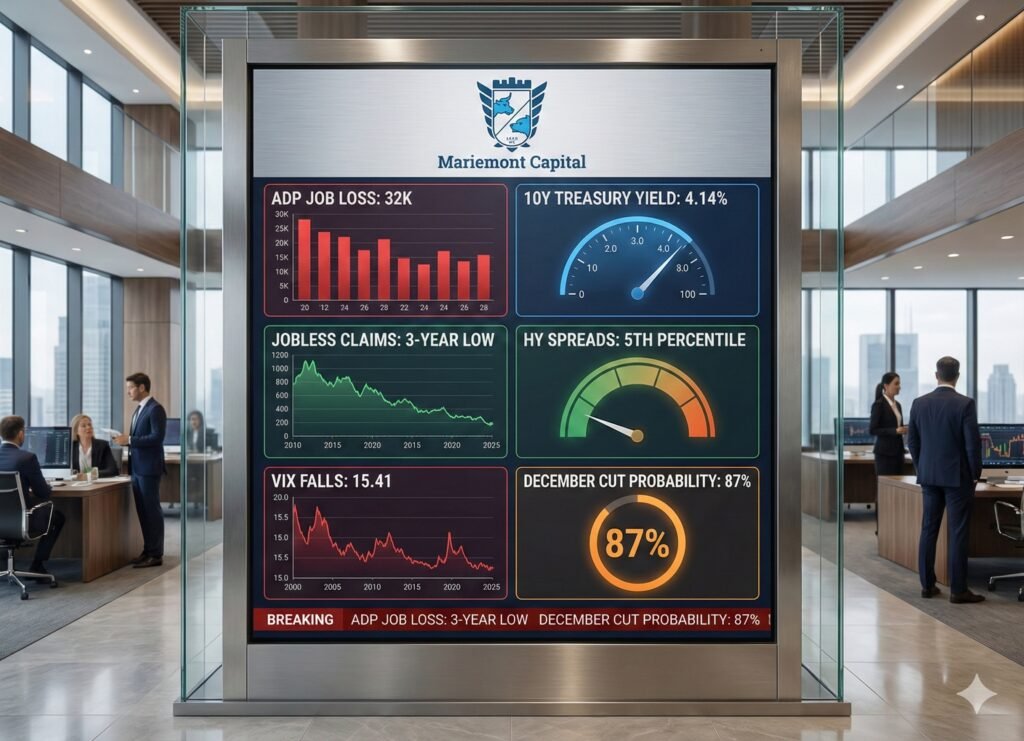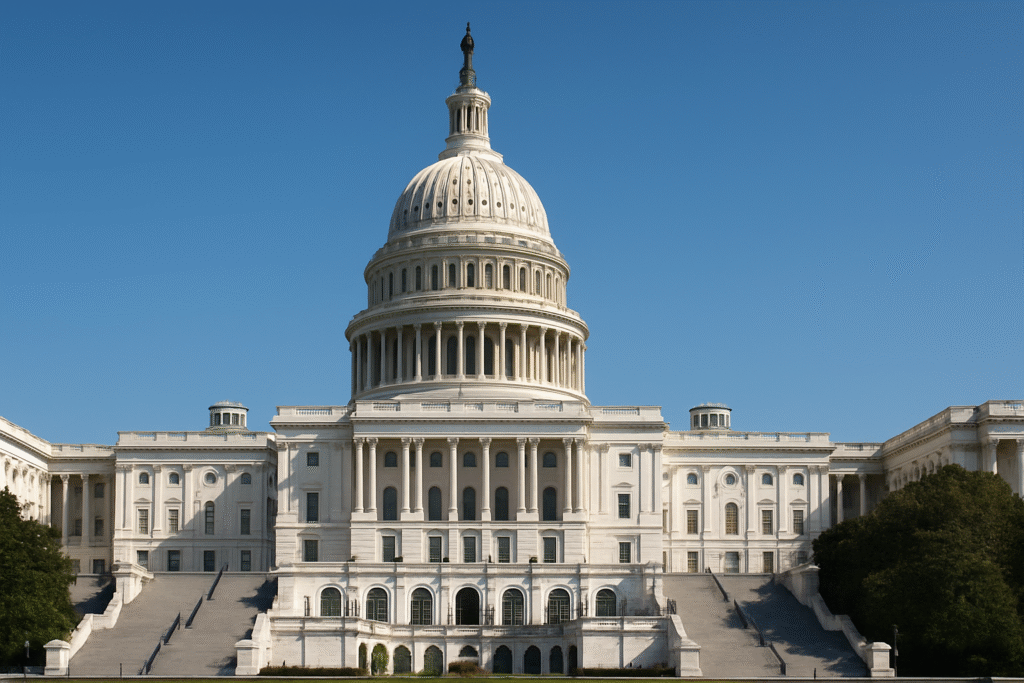December Fed Rate Cut 2025: Yields Rise & Credit Spreads Tighten

December Fed Rate Cut 2025: Treasury Yields Rise as Markets Price 87% Cut Probability | Mariemont Capital Duration & Credit Pulse Week Ending December 7, 2025 Executive Summary Bottom Line: Mixed labor market signals dominated the week as ADP reported a 32,000 job contraction while initial jobless claims fell to a three-year low of 191,000. […]
Duration & Credit Pulse: November 28, 2025

Federal Reserve December Rate Cut: Treasury Yields Fall as Fed Signals Shift – Week Ending November 28, 2025 | Mariemont Capital Duration & Credit Pulse Week Ending November 28, 2025 Executive Summary Bottom Line: Federal Reserve December rate cut expectations drove fixed income markets during a holiday-shortened week, with dovish commentary from Fed Governors Waller […]
Duration & Credit Pulse: November 23, 2025

Fed December Rate Cut Odds Rise on Williams Comments: Treasury Yields Fall 8-11 bps | November 23, 2025 Duration & Credit Pulse Week Ending November 23, 2025 Executive Summary Bottom Line: Treasury markets moved lower late week as NY Fed President Williams’ November 21 comments favoring additional near-term policy adjustment contrasted with earlier hawkish guidance […]
Duration & Credit Pulse: November 16, 2025

Fed December Rate Cut 2025 Odds Collapse as Data Blackout Ends | Duration & Credit Pulse – November 16, 2025 Duration & Credit Pulse Week Ending November 16, 2025 Executive Summary Bottom Line: The week of November 9-16 marked an important shift as the 43-day government shutdown ended, yet Fed December rate cut 2025 probability […]
Duration & Credit Pulse: November 9, 2025

Duration & Credit Pulse – Week Ending November 9, 2025 | Mariemont Capital Duration & Credit Pulse Week Ending November 9, 2025 Executive Summary Key Developments: The government shutdown reached its 40th day, resulting in the suspension of major economic data releases. Treasury yields exhibited limited movement with the 10-year closing at 4.10%, up 2 […]
Duration & Credit Pulse: November 2, 2025

FOMC October 2025: Fed Cuts 25bp, 10-Year Treasury Rises to 4.08% | Duration & Credit Pulse Duration & Credit Pulse Week Ending November 2, 2025 Executive Summary Bottom Line: The Federal Reserve’s October 29 FOMC meeting delivered a 25 basis point rate cut to 3.75-4.00%, though Chair Powell’s cautious forward guidance—indicating a December cut is […]
Duration & Credit Pulse: October 26, 2025

Government Shutdown October 2025: Treasury Yields Break Below 4% as Data Blackout Drives Haven Demand | Mariemont Capital Duration & Credit Pulse Week Ending October 26, 2025 Executive Summary Bottom Line: The government shutdown October 2025 entered its fourth week, creating a significant data void that drove defensive Treasury positioning as the 10-year yield broke […]
Duration & Credit Pulse: October 19, 2025

Credit Spreads Historic Lows October 2025: IG 73bp, HY 278bp Defy Shutdown Chaos | Duration & Credit Pulse Duration & Credit Pulse Week Ending October 19, 2025 Executive Summary Bottom Line: Credit spreads compressed to 15-year lows with investment grade at 73 basis points and high yield at 278 basis points, defying day 19 of […]
Duration & Credit Pulse: October 12, 2025

Government Shutdown October 2025: Treasury Yields Fall 8-9bp as VIX Surges 30% | Mariemont Capital Duration & Credit Pulse Week Ending October 12, 2025 Executive Summary Bottom Line: The government shutdown October 2025 created unprecedented market conditions as Treasury yields fell 8-9 basis points across the curve while credit markets experienced violent repricing—high yield spreads […]
Duration & Credit Pulse: October 5, 2025

Government Shutdown October 2025: Treasury Yields Fall as Jobs Data Vanishes | Duration & Credit Pulse Duration & Credit Pulse Week Ending October 5, 2025 Executive Summary Bottom Line: The government shutdown beginning October 1 collided with deteriorating labor market data, creating an unprecedented policy vacuum as the September jobs report vanished and ADP showed […]

